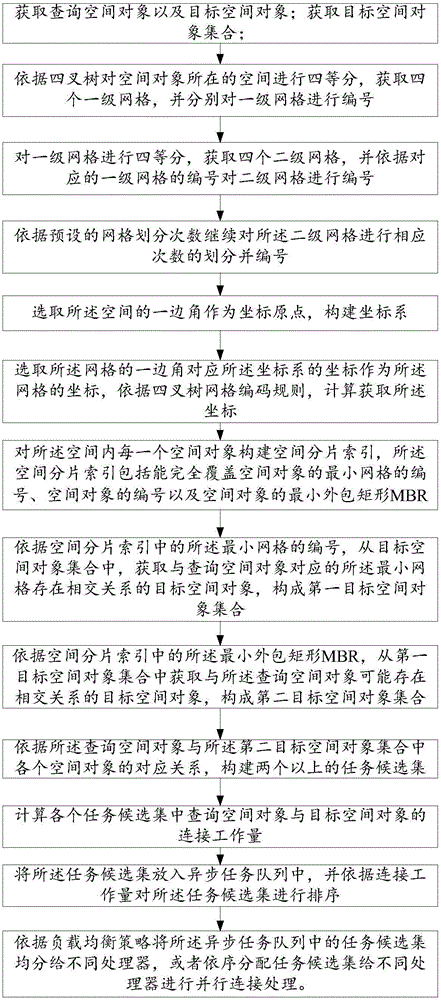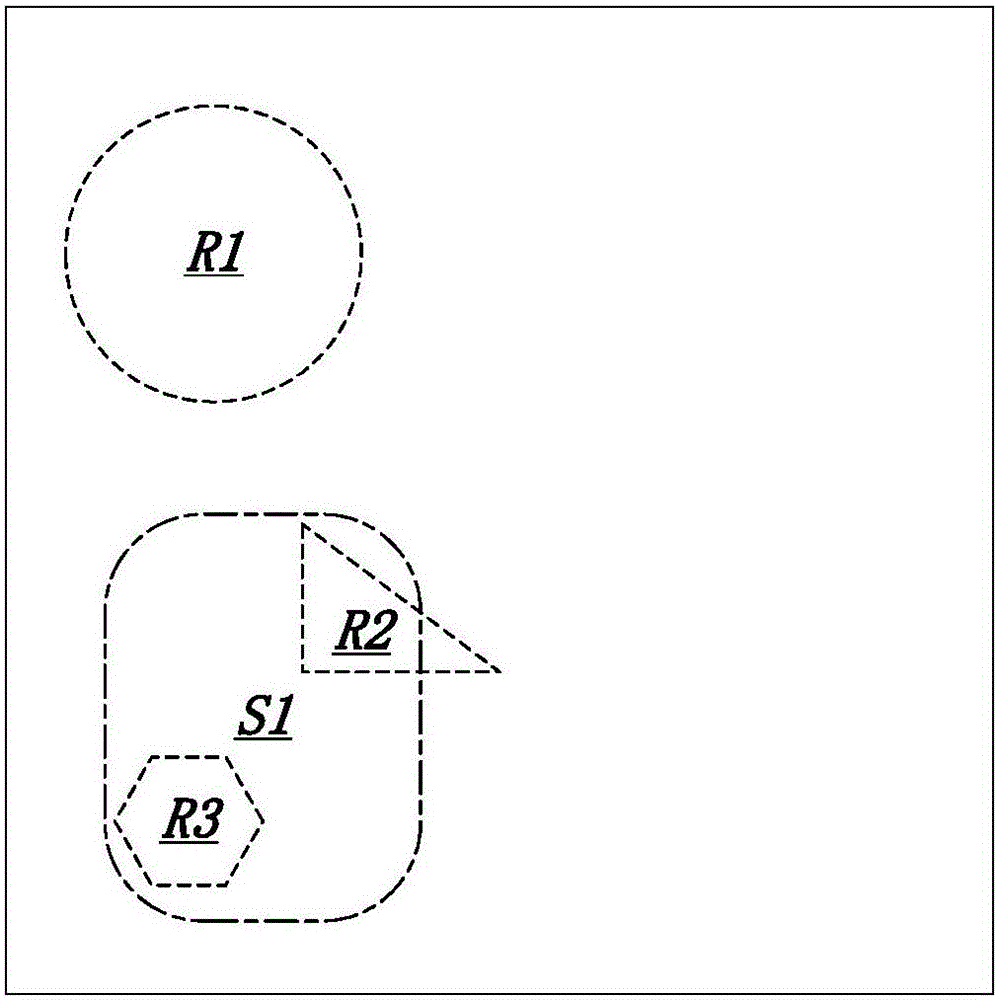Method for parallel space query based on grid division and system of same
A grid division and spatial query technology, applied in special data processing applications, instruments, electrical digital data processing, etc., to reduce data storage space, improve efficiency, and reduce task candidate sets
- Summary
- Abstract
- Description
- Claims
- Application Information
AI Technical Summary
Problems solved by technology
Method used
Image
Examples
Embodiment 1
[0090] Please refer to figure 2 , Figure 3(a) to Figure 3(c) , this embodiment provides a parallel spatial query method based on mesh division, and the spatial query may be a join query or a range query. Take the parallel connection query of R and S as an example, assuming that the R is a bus route and the S is a bridge, by performing a parallel connection query on R and S, all bridges intersecting with the bus route are obtained;
[0091] First, determine the query space object and the target space object, that is, the query space object is an arbitrarily designated bus route R1, the target space object is a bridge, and the parallel query condition is that the spatial topology relationship between the two is intersection;
[0092] Then obtain the target spatial object set of the query space, that is, the set of all bridges; for the spatial data set participating in the parallel spatial query, that is, the query spatial object and the target spatial object set, the spatial ...
Embodiment 3
[0134] This embodiment is further extended on the basis of Embodiment 1 and Embodiment 2, and the similarities will not be repeated. The difference lies in the addition of a load balancing distribution scheme based on spatial object-based spatial fragmentation indexes:
[0135] 1. According to the corresponding relationship between the query spatial object and each spatial object in the second target spatial object set, construct more than two task candidate sets; such as the task candidate set of S1-R2; the task candidate set of S1-R3 ;
[0136] 2. Calculate the connection workload between the query space object and the target space object in each task candidate set, that is, the connection workload Wt from S1 to R1;
[0137] 3. Put the task candidate set into the asynchronous task queue, and sort the task candidate set according to the connection workload; sort the task queue Task with Wt as the key, set Wp=Wsum / N,
[0138] Where Wsum is the total workload, N is the number ...
Embodiment 4
[0144] see Figure 5 , this embodiment provides a grid-based parallel spatial query system corresponding to the parallel spatial query method of Embodiments 1 to 3, specifically including:
[0145] The first acquisition module 1 is used to determine the query space object and the target space object;
[0146] The second obtaining module 2 is used to obtain a target space object set;
[0147] A grid division module 3, configured to perform grid division on the spatial range where the query spatial object set and the second target spatial object set are located according to the quadtree;
[0148] The grid numbering module 4 is used to number the grids according to the quadtree; the grid division module and the grid numbering module can be integrated and realized by a functional module, which specifically includes:
[0149] The first-level division numbering unit 11 is used to quarter the space where the spatial object is located according to the quadtree model, obtain four fir...
PUM
 Login to View More
Login to View More Abstract
Description
Claims
Application Information
 Login to View More
Login to View More - R&D
- Intellectual Property
- Life Sciences
- Materials
- Tech Scout
- Unparalleled Data Quality
- Higher Quality Content
- 60% Fewer Hallucinations
Browse by: Latest US Patents, China's latest patents, Technical Efficacy Thesaurus, Application Domain, Technology Topic, Popular Technical Reports.
© 2025 PatSnap. All rights reserved.Legal|Privacy policy|Modern Slavery Act Transparency Statement|Sitemap|About US| Contact US: help@patsnap.com



